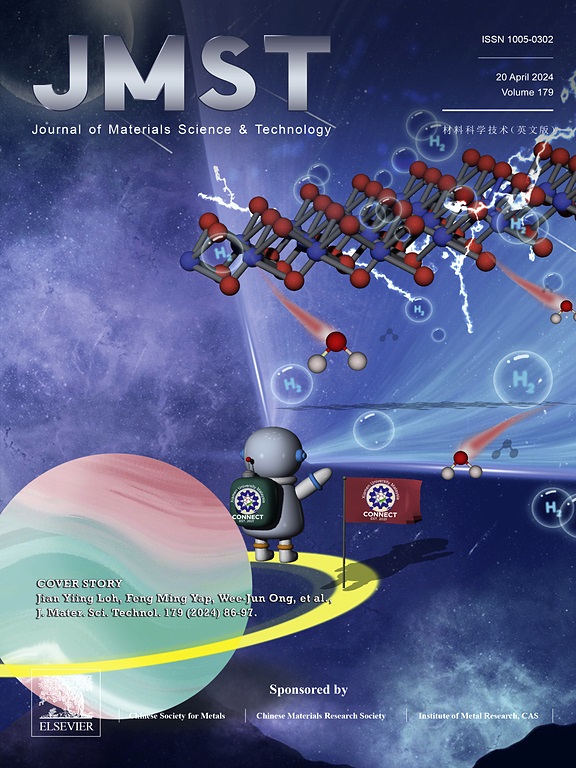Compositional modification for efficient near-room-temperature Ag2Se thermoelectrics through modulation decoration of amorphous Sb2S3
IF 11.2
1区 材料科学
Q1 MATERIALS SCIENCE, MULTIDISCIPLINARY
引用次数: 0
Abstract
Compositing a secondary phase in Ag2Se can usually tune the electron and phonon scattering to improve the thermoelectric performance. However, the intrinsically high carrier concentration still limits the performance optimization. Here, we employ a modulation decoration strategy to simultaneously achieve submicron-scale constituents and compositional modification for synergistic optimization of thermoelectric properties. Amorphous nano Sb2S3 has been decorated on the surface of Ag2Se powders, and S was added into the Ag2Se matrix through an ion exchange reaction accompanied by the formation of a crystal/amorphous mixed secondary phase of Sb2(S, Se)3. The S doping reduced the excessive intrinsic carrier concentration, leading to modified electrical transport properties and significantly reduced electrical thermal conductivity. On the other hand, introducing the S dopants and the crystal/amorphous interfaces into the Ag2Se matrix could increase the lattice anharmonicity, further contributing to the reduced thermal conductivity. Consequently, the Ag2Se-0.4% Sb2S3 sample obtains a high average zT value of > 1 in the temperature range of 300–390 K. In addition, the maximum cooling temperature difference of over 85 K can be predicted in an Ag2Se/Ag2Se-0.4% Sb2S3 segregated module at the hot side temperature of 350 K.

在 Ag2Se 中合成第二相通常可以调整电子和声子散射,从而提高热电性能。然而,高载流子浓度的本质仍然限制了性能的优化。在此,我们采用调制装饰策略,同时实现亚微米尺度的成分和组成修饰,以协同优化热电性能。我们在 Ag2Se 粉末表面装饰了无定形纳米 Sb2S3,并通过离子交换反应将 S 添加到 Ag2Se 基体中,同时形成晶体/无定形混合二级相 Sb2(S,Se)3。S 掺杂降低了过高的本征载流子浓度,从而改变了电传输性能,并显著降低了电导率。另一方面,在 Ag2Se 基体中引入 S 掺杂剂和晶体/非晶界面会增加晶格非谐调性,进一步导致热导率降低。因此,Ag2Se-0.4% Sb2S3 样品在 300-390 K 的温度范围内获得了较高的平均 zT 值 >1。此外,在 350 K 的热侧温度下,Ag2Se/Ag2Se-0.4% Sb2S3 隔离模块的最大冷却温差可超过 85 K。
本文章由计算机程序翻译,如有差异,请以英文原文为准。
求助全文
约1分钟内获得全文
求助全文
来源期刊

Journal of Materials Science & Technology
工程技术-材料科学:综合
CiteScore
20.00
自引率
11.00%
发文量
995
审稿时长
13 days
期刊介绍:
Journal of Materials Science & Technology strives to promote global collaboration in the field of materials science and technology. It primarily publishes original research papers, invited review articles, letters, research notes, and summaries of scientific achievements. The journal covers a wide range of materials science and technology topics, including metallic materials, inorganic nonmetallic materials, and composite materials.
 求助内容:
求助内容: 应助结果提醒方式:
应助结果提醒方式:


